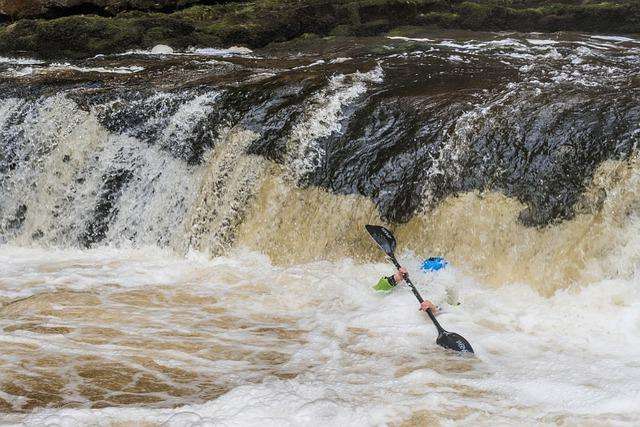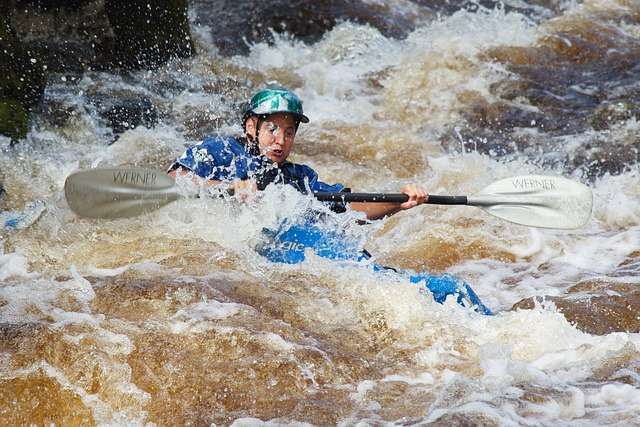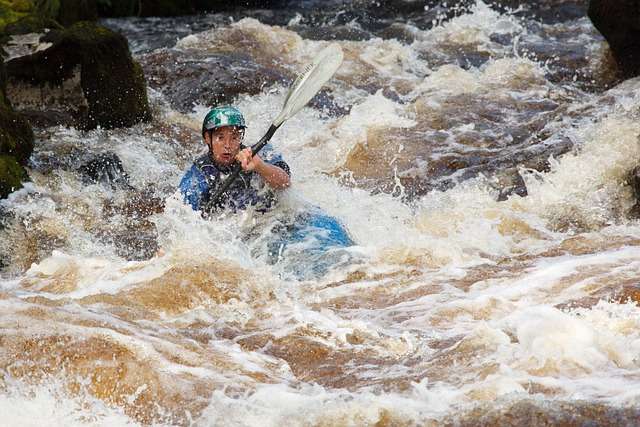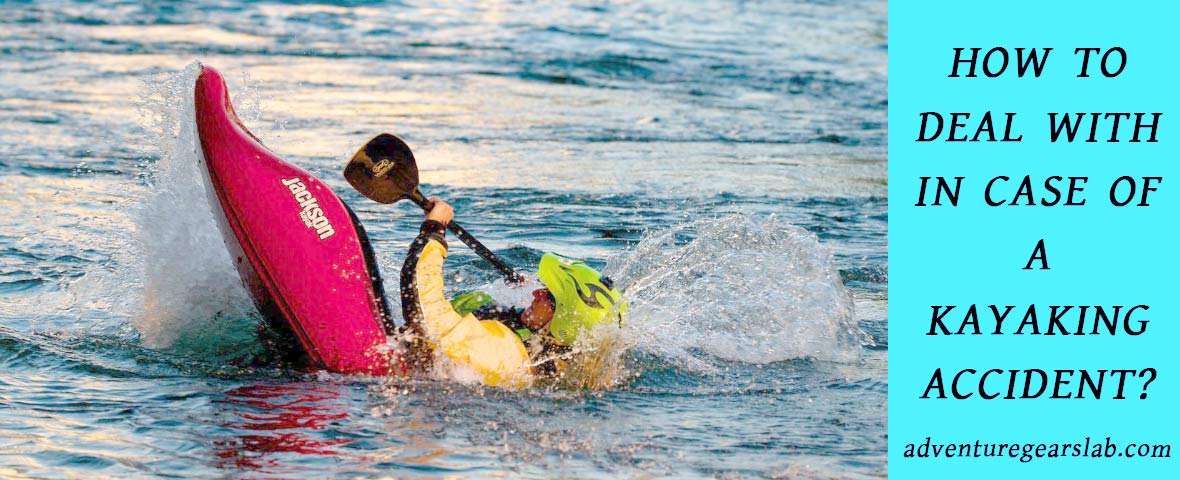It is basically an activity requiring your proficient paddling skills and ability to balance on water. A boat used in kayak is specialized and called as “the kayak”. You also need to prepare a good kayak paddle if you do not want to ruin your kayak adventures.
There are a number of different types of kayak and you are able to play in various areas, including rivers, seas or big lakes. This gives you both more choices and versatility to satisfy your own taste at varying times.
One mistake that not few kayakers make is just focusing on learning techniques for better performance and lacking interest in essential rescue skills. If you are familiar with kayaking, you will definitely be aware that how dangerous it is in the event that you fall out of a kayak.
Your acknowledgment of what to do and what not to do can help you cope with situations. In addition, you may not have to get into regretful cases, witnessing your fellow in an accident. But cannot do anything to assist since you don’t know what you should do, for instance.

Image Credit- pixabay.com
Getting to know fundamental methods of saving lives is the only way to ensure your safety during your participation in an extreme sport.
To decide what technique is appropriate, you should take main factors, namely water condition, your kayak’s features and real situations as a basis. In addition, the ability of a rescuer is a crucial element which can help determine the strategy.
Building and maintaining the right attitude toward pursuing your target
It is of great importance that you give top priority to safety. You need to control your own exhilaration throughout your adventure and know when to interrupt your activity. No matter how competent you are and how perfect your arrangement for your adventuring day is, you should never get the lack of caution.
Before every kayak trip, you should check and prepare for everything. Not one of the kayakers dares to ensure that there will be no change in weather. In fact, unfortunate incidents due to suddenly bad weather have been very common so far.
Additionally, whether or not you get a companion also affects the possibility for your friend and you will be safe again once a misfortune happens.
How you should prepare to reduce inherent risks

Image Credit- pixabay.com
First, it is necessary that you seek ways to get your body to be accustomed to wave height as well as water temperature at an area where you kayak. Your ability to endure sea currents and waves’ movements partially helps you be less prone to suffer hypothermia.
Hypothermia occurs when your body temperature considerably goes down and it is abnormally low. Only by boosting your body’s resistance plus getting familiar with natural conditions at your kayaking spot, are you more likely to avoid the cold injury?
Another cause is that you get wet by strong winds and large waves.
A typical instance is that water temperature is very low, below 2 degrees Celsius on some islands in Washington State in mid-summer. Kayakers cannot even survive after around 40 minutes if falling into such cold water.
Next, it is better to bring a personal flotation device (PFD) along regardless of the fact that you may swim or not. It is really useful in case you get exhausted or suffer muscle cramps. Furthermore, proper items of clothing support in flotation, but being not able to replace the apparatus.
You may as well check the temperature of both air and water initially so that you could know what to wear. In general, you should choose a dry suit provided that you try to retain heat from clothes when kayaking. This is because an insulation layer inside the suit plays a key role in warming your body.
Another choice for a kayaker is a wetsuit. It can actually work as a steady adjustment and stabilization of your body temperature at an appropriate level when cold water gets into the suit. Beside clothes, you should also equip some useful items, such as footwear, gloves, or hats.
Elementary Rescue Skills

Image Credit- pixabay.com
A – What you should do when a kayak capsize happens
In order to successfully get rid of a capsizing situation, you need to take time to practice skills in advance. In fact, not all of the kayakers can hold their paddles; simultaneously, they have much difficulty in staying calm to deal with an unexpected event. Mastering self-rescue steps not only saves your life, but also fosters your confidence needed for your upcoming kayaking adventures.
YOU PREFER TURNING OVER YOUR CAPSIZED KAYAK
A1 - The Eskimo Roll
The first solution you may think of is to do an Eskimo roll. However, the way to implement this technique is also varied. Based largely on your proficiency level and physical health, you can decide what type to execute, a screw roll, a hand roll or an obsolete roll.
If you are new to the skill, you could learn to roll in a swimming pool first. You will not have to worry about cold water or powerful waves. In addition, you should bear in mind that your hip is the main determinant of a good roll, not your paddle.
To upright your kayak, you need to keep your head low and perform a flick of your hip. It requires the good co-ordination and flexibility of your upper and lower body. An effective flick may sound intricate to implement, but it is actually not. You are capable of rolling a kayak on condition that you do not hesitate to train yourself.
To ensure your safety, you may as well have a friend observe your practice and support you every time anything dangerous occurs.
Importantly, you should give a grip to your paddle so that they are not swept away by sea water and wind. If your friends paddle nearby, you could quickly sign to them to move their kayaks to your position. Right at that time, you will pull yourself up by grasping your companion’s boat.
A2– No other way but to swim
In case of recovering your kayak to the upright position is infeasible, you should prepare your mind and body for swimming. It is supposed that air trapped inside a kayak causes it not to easily sink below water surface. Providing that you lose your reach for both your kayak and your paddle, it is highly recommended to look for the kayak first.
Even if the weather is good, you definitely still need to spend a lot of effort on swimming along with a kayak. In this case, your technique is not too important. While you attempt to move toward the seashore, you have to pull the kayak and paddle along.
However, not abandoning your kayak is advantageous since you will not have to face the risk of staying underwater for long periods of time. Specifically, you cannot breathe underwater long without the use of a specialized breathing apparatus. Moreover, swimming alone is more challenging so you have nothing to grab for taking a rest during your long swim.
YOU PREFER AN EXIT FROM YOUR CAPSIZED KAYAK
B - A Wet Exit <= Your kayak is upside down and you get trapped in a cockpit
In case that you suddenly turn over in your kayak when you are on a kayak seat, you will realize how crucial to learn a skill enabling you to get out of the kayak fast and safely. In fact, falling out of the boat is quite dangerous because underwater obstacles are not rare.
Practice prior to performing a wet exit in the water
You can absolutely create a capsizing circumstance as in the real life by yourself.
Initially, you could learn the skill on the bank. Right after sitting in a kayak with your proper kayaking posture, you should take a deep breath then lean forward. At the same time, flexibly use your whole body in order to flip over your boat.
After the kayak capsizes, you need to stay calm and release your hip, knees as well as thighs. Next, push your body out of the kayak gradually. If you are a novice to this method, just believe that practicing, again and again, will surely ease your anxiety and speed up your action.
How to deal with when you wear a spray skirt
In general, it takes just a few seconds for a kayaker to remove himself from an overturned kayak. However, in case of a spray deck, you need both more time and confidence. Additionally, to avoid losing your grip on a paddle, you may put it between your thighs.
Make sure that you can pull the skirt off and be careful if you don’t want to cause injury to your body parts. Steps to get rid of a tip-over state are almost the same as they are in the case without equipping a spray cover.
Here, generally you will have two corresponding choices. The first one is swimming with your kayak and paddle (your kayak is in reverse). The second one is re-entering a sit - inside kayak (after you upright your kayak) to continue your exhilarating tour.
To conclude, there are many ways for you to accumulate rescuing knowledge, from referring to reliable guides, listening to skilled kayakers with actual rescuing experience. Or you can simply take part in training courses. The more skillful you are in handling kayak accidents, the more joys of kayaking you can get.









